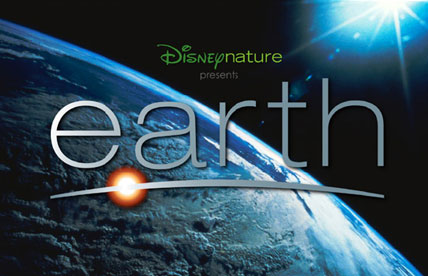
by Erin Wayman Thursday, January 5, 2012

Disneynature
Earth Day is over. But you don’t have to wait until next year to celebrate the planet. Disney’s new movie “Earth,” which opened Apr. 22, offers some spectacular views of the planet and its inhabitants.
Brought to you by the same folks who produced the BBC’s “Planet Earth,” “Earth” is billed as a story of three animal families: a mama polar bear and her two cubs searching for food in the Arctic; an elephant and her calf marching across South Africa’s dusty Kalahari Desert to find water; and a humpback whale and her calf swimming thousands of kilometers from the tropics to the frigid waters surrounding Antarctica.
These families are the only animals that make more than one appearance in the movie, but at no point does “Earth” feel like a movie about these particular animals. Instead of a biography, “Earth” is more like a family album filled with snapshots of momentous occasions in the lives of different animals (and in rare instances, plants and fungi — sorry single-celled life forms, you didn’t make the cut).
The constantly changing cast of characters and landscapes — and vantage points: aerial shots, close ups, satellite images, slow motion and time-elapsed sequences — should manage to satisfy even those with short attention spans (kids). There are the millions of caribou migrating across the Canadian tundra, who, from far above, look like white ants swarming across the landscape. In a New Guinea rain forest, a male bird of paradise — outfitted in outlandish plumage that makes him look like a black and turquoise smiley face — attempts to seduce a female with his hot dance moves, only to watch her fly away, apparently unimpressed. A troop of Chacma baboons wade across a flooded South African delta, snacking on flower buds and bobbing their heads (apparently in time with the music playing in the background).
Although “Earth” may be light on storylines, it’s certainly heavy on drama. The movie highlights numerous predator-prey battles: A cheetah chases down a gazelle. A hungry polar bear takes on a group of walruses. A great white shark scoops up a seal out of the water. And sometimes, “Earth” may make you weepy. At one point during their trek, the elephant and her infant get caught in a blinding dust storm and become separated from the rest of their herd. Will they catch up in time before hungry predators find the vulnerable pair? Another young elephant also gets lost during the storm. He can’t find his mother. But he finds her tracks — and then follows them in the wrong direction. It’s heartbreaking.
Like so many nature documentaries, living Earth takes center stage, but the physical side of the planet does have its moments — and it’s at those points where a tad of science sneaks into the film. Narrator James Earl Jones tells us Earth is slightly off kilter, tilted at an angle of 23.5 degrees. This tilt gives the planet its seasons — it’s what causes the Arctic’s sea ice to freeze in the winter and melt in the summer (which is demonstrated through time-elapsed shots of the Arctic Ocean). In another scene, puffy clouds and storms form over the ocean, and it is the evaporation of the water over the ocean, we are told, that then provides the rain that will turn bits of the Kalahari Desert into the fertile delta that the elephant family is trying to reach.
One charismatic mammal that is noticeably absent are humans — but we do have a silent, looming presence in the movie. James Earl Jones tells us more than once that the planet is changing, and this is not a good thing. Forests are shrinking. Deserts are expanding. And the planet is warming (although we are never told why). This is especially bad news for the polar bear family. Polar bears rely on sea ice as a jumping-off point to hunt seals. But Arctic sea ice is shrinking: Ice is melting earlier and earlier each summer, and it’s getting thinner and thinner. The consequences may be dire as a solitary male polar bear demonstrates. He gets caught on the thinning ice, desperately trying to crawl onto the slush as it breaks under his weight. Then he is left to swim in the open ocean. Will he find food? Will he make it to land? Things don’t look too good for him — or his species, the movie implies.
Above all, “Earth” is a visually stunning trip around the planet, giving viewers a tour of many places they will probably never see. Not a bad way to spend an hour and a half. But make sure you stay for the credits to get a glimpse of how the filmmakers managed to get their amazing shots.
© 2008-2021. All rights reserved. Any copying, redistribution or retransmission of any of the contents of this service without the expressed written permission of the American Geosciences Institute is expressly prohibited. Click here for all copyright requests.